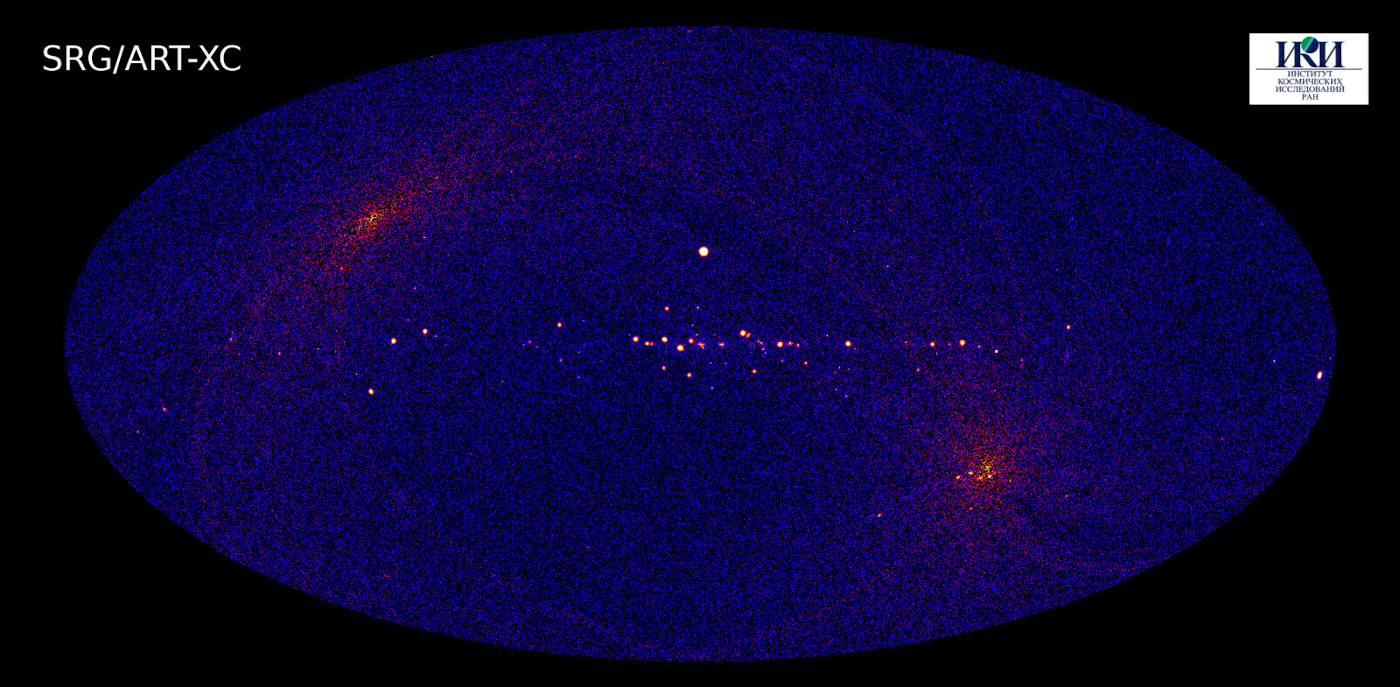
 Credit: M. Pavlinsky; IKI
Credit: M. Pavlinsky; IKI
The Hidden Universe Revealed
In its lonely halo orbit 1.5 million miles from earth, the Spektr-RG observatory (SRG for short) scans great circles on the sky around the Sun-Earth L2 point (the first Russian observatory to operate there). SRG carries two telescopes, eROSITA and ART-XC, and these two telescopes map out the entire X-ray Universe every six months. SRG has just finished its first all-sky X-ray survey, which lasted from December 8, 2019 until June 10, 2020. The ART-XC telescope provides the highest-resolution wide-field images in the high-energy X-ray band (4-30 keV), and so provides a revolutionary new view of the X-ray Universe. Because the high-energy X-rays that ART-XC observes can penetrate through vast amounts of dust, ART-XC can find obscured objects hidden to telescopes which operate in lower energy bands.
The image above shows the very first all-sky map obtained by ART-XC, in the 4-12 keV band. ART-XC has already detected nearly 600 objects, about two thirds of which are within the Milky Way, and the remainder beyond our Galaxy. The bright areas in the upper left and lower right of the image are the ecliptic poles, which are more highly exposed due to SRG's orbit around the Sun-Earth line. The all-sky survey will be repeated 7 more times over the next 3.5 years, building up exposure to detect ever-fainter sources and allowing scientists to monitor changes in the X-ray sky. ART-XC is expected to eventually find around 10 thousand hard X-ray sources, providing a unique census of actively feeding supermassive black holes and other strange objects. The ART-XC telescope was developed by the Space Research Institute (Moscow) and the Russian Federal Nuclear Center (Sarov), while its mirrors were fabricated by NASA's Marshall Space Flight Center.
Published: June 22, 2020
<
HEA Dictionary ● Archive
● Search HEAPOW
● Other Languages
● HEAPOW on Facebook
● Download all Images
● Education ● HEAD
>

Each week the HEASARC
brings you new, exciting and beautiful images from X-ray and Gamma ray
astronomy. Check back each week and be sure to check out the HEAPOW archive!
Page Author: Dr. Mikhail Pavlinski & Dr. Michael F. Corcoran &
Last modified Monday, 29-Jun-2020 10:04:13 EDT


